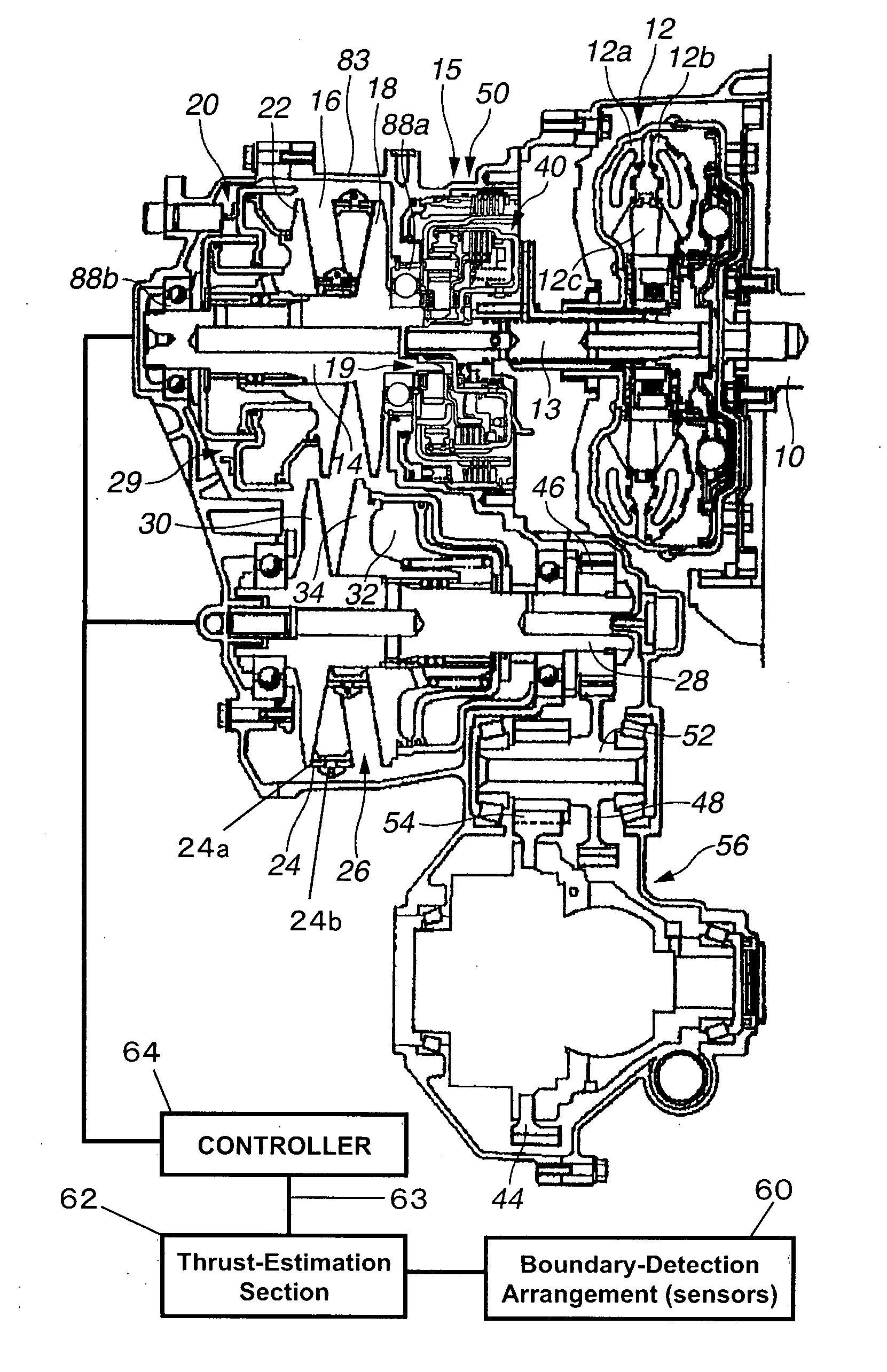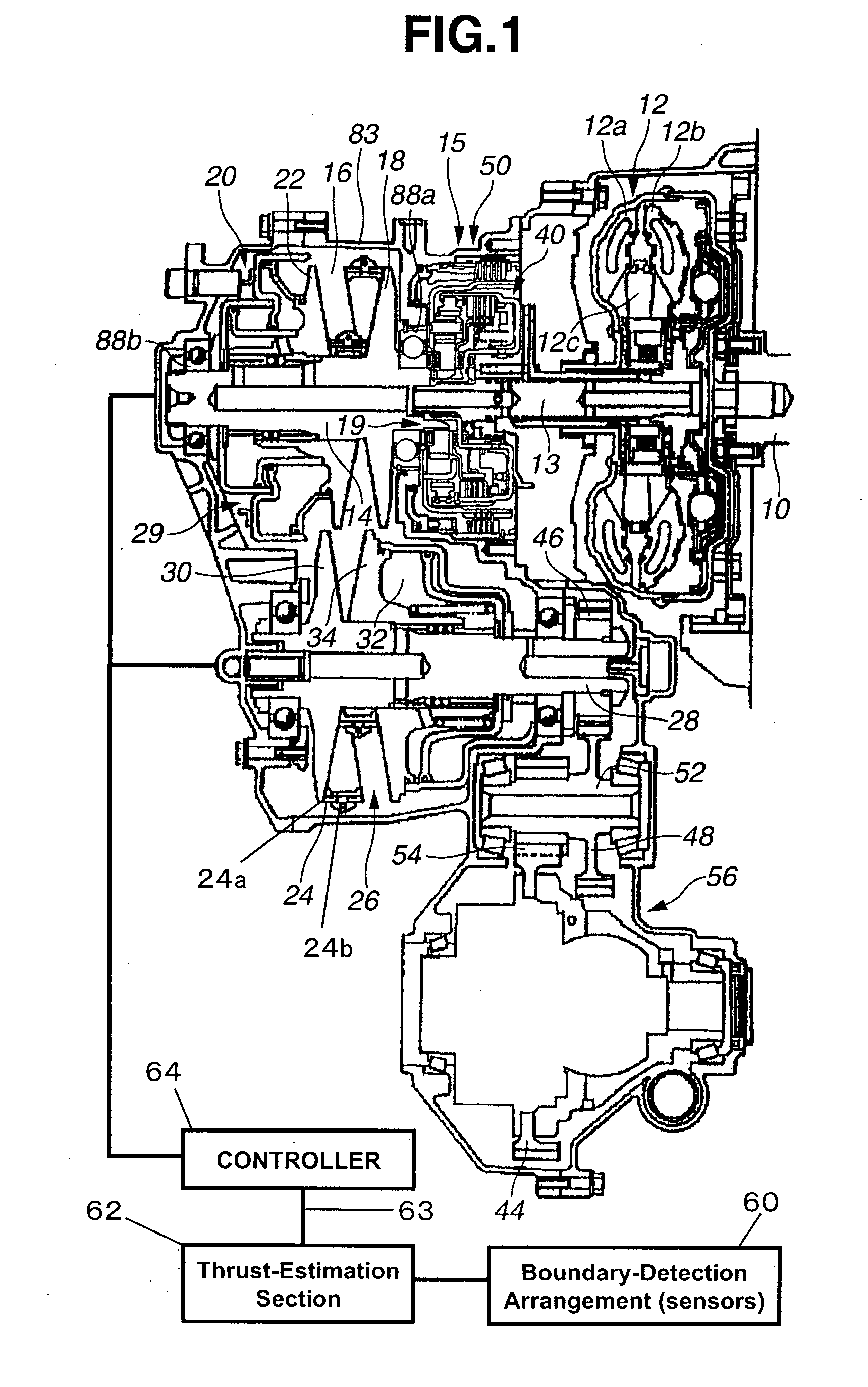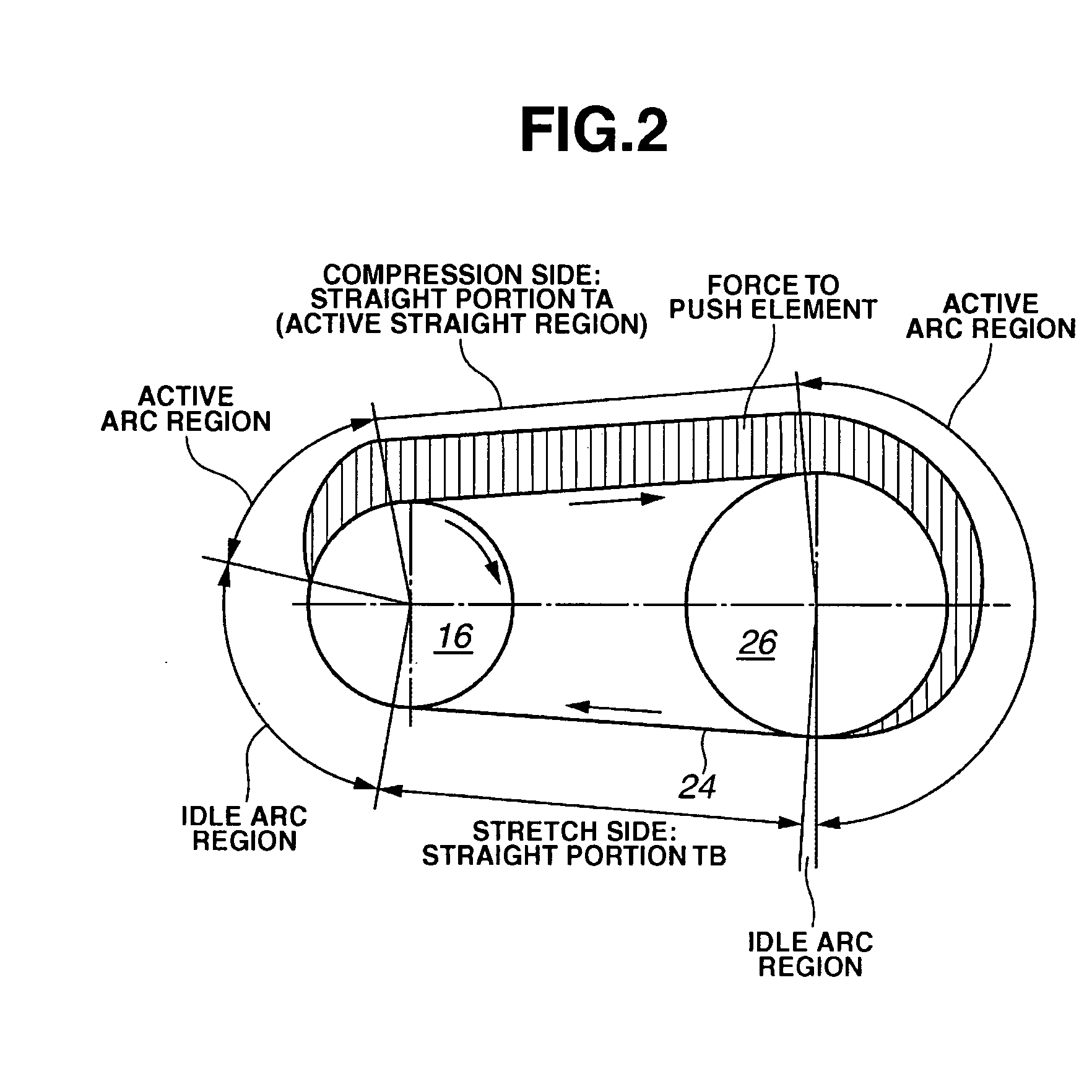Continuously variable V-belt transmission
a transmission and continuously variable technology, applied in the direction of gearing control, gearing elements, hoisting equipment, etc., can solve the problems of increasing the load on the v-belt, and reducing so as to reduce the durability of the v-belt and poor fuel economy
- Summary
- Abstract
- Description
- Claims
- Application Information
AI Technical Summary
Benefits of technology
Problems solved by technology
Method used
Image
Examples
Embodiment Construction
[0025]Selected embodiments of the present invention will now be explained with reference to the drawings. It will be apparent to those skilled in the art from this disclosure that the following descriptions of the embodiments of the present invention are provided for illustration only and not for the purpose of limiting the invention as defined by the appended claims and their equivalents.
[0026]Referring initially to FIG. 1, a V-belt continuously variable is illustrated in accordance with a first embodiment of the present invention. FIG. 1 is a cross sectional view of the continuously variable V-belt transmission. This continuously variable transmission is connected to an output shaft 10 of an engine to transmit rotation of the output shaft 10 of the engine to a drive wheel (not shown). The continuously variable transmission includes, among other components, a torque converter (start mechanism) 12, a driving shaft (an output shaft) 14, a forward reverse changeover mechanism 15, a V-...
PUM
 Login to View More
Login to View More Abstract
Description
Claims
Application Information
 Login to View More
Login to View More - R&D
- Intellectual Property
- Life Sciences
- Materials
- Tech Scout
- Unparalleled Data Quality
- Higher Quality Content
- 60% Fewer Hallucinations
Browse by: Latest US Patents, China's latest patents, Technical Efficacy Thesaurus, Application Domain, Technology Topic, Popular Technical Reports.
© 2025 PatSnap. All rights reserved.Legal|Privacy policy|Modern Slavery Act Transparency Statement|Sitemap|About US| Contact US: help@patsnap.com



